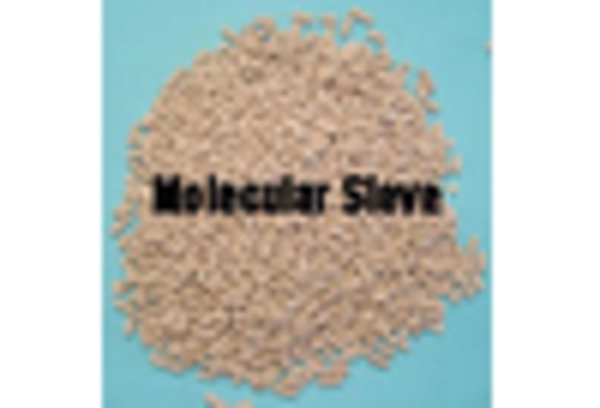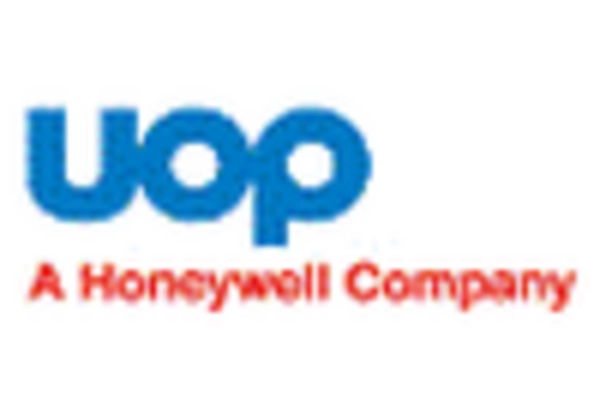Expansion of Natural Gas Processing
The Carbon Molecular Sieve Market is poised for growth due to the expansion of natural gas processing activities. As the demand for natural gas continues to rise, the need for efficient separation technologies becomes paramount. Carbon molecular sieves play a crucial role in the purification of natural gas by selectively removing impurities such as carbon dioxide and water vapor. The natural gas processing market is projected to reach USD 200 billion by 2025, which suggests a substantial opportunity for carbon molecular sieve applications. This expansion is likely to drive innovation in the development of more efficient and cost-effective carbon molecular sieves, thereby enhancing their market presence. The synergy between natural gas processing and carbon molecular sieve technologies is expected to foster a robust growth environment.
Growing Need for Air Separation Processes
The Carbon Molecular Sieve Market is significantly influenced by the growing need for air separation processes. Industries such as healthcare, food and beverage, and electronics require high-purity nitrogen and oxygen, which are obtained through air separation. Carbon molecular sieves are essential in these processes, as they selectively adsorb gases based on molecular size. The air separation market is anticipated to grow at a CAGR of 6% from 2023 to 2030, which could lead to increased demand for carbon molecular sieves. This growth is driven by the rising need for nitrogen in food preservation and oxygen in medical applications. Consequently, the carbon molecular sieve market is poised to benefit from this expanding demand for air separation technologies.
Rising Investment in Research and Development
The Carbon Molecular Sieve Market is witnessing a surge in investment in research and development activities. As industries seek to enhance the performance and efficiency of carbon molecular sieves, significant resources are being allocated to innovation. This focus on R&D is expected to lead to the development of advanced materials with improved selectivity and durability. The global investment in R&D for separation technologies is projected to reach USD 5 billion by 2027, indicating a strong commitment to advancing carbon molecular sieve technologies. This influx of investment is likely to foster collaboration between academic institutions and industry players, resulting in breakthroughs that could redefine the capabilities of carbon molecular sieves. The emphasis on R&D is anticipated to be a key driver of growth in the carbon molecular sieve market.
Increasing Adoption of Carbon Capture Technologies
The Carbon Molecular Sieve Market is experiencing a notable surge due to the increasing adoption of carbon capture technologies. As industries strive to reduce their carbon footprints, the demand for efficient separation technologies has escalated. Carbon molecular sieves are pivotal in capturing carbon dioxide from various emissions, thereby facilitating compliance with stringent environmental regulations. The market for carbon capture is projected to reach USD 10 billion by 2026, indicating a robust growth trajectory. This trend is likely to bolster the carbon molecular sieve market, as these materials are integral to enhancing the efficiency of carbon capture systems. Furthermore, the emphasis on sustainable practices across sectors is expected to drive innovation and investment in carbon molecular sieve technologies.
Regulatory Support for Environmental Sustainability
The Carbon Molecular Sieve Market is benefiting from increasing regulatory support for environmental sustainability. Governments worldwide are implementing stringent regulations aimed at reducing greenhouse gas emissions and promoting cleaner technologies. This regulatory landscape encourages industries to adopt carbon molecular sieves for effective gas separation and purification processes. The market for environmental technologies is expected to grow significantly, with investments in sustainable solutions projected to exceed USD 1 trillion by 2030. This trend indicates a favorable environment for the carbon molecular sieve market, as companies seek to comply with regulations while enhancing operational efficiency. The alignment of regulatory frameworks with market needs is likely to drive the adoption of carbon molecular sieves across various sectors.


















Leave a Comment